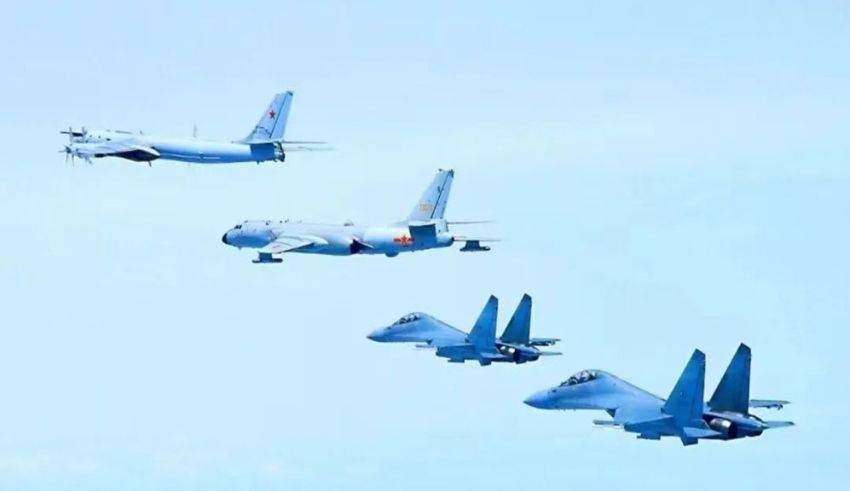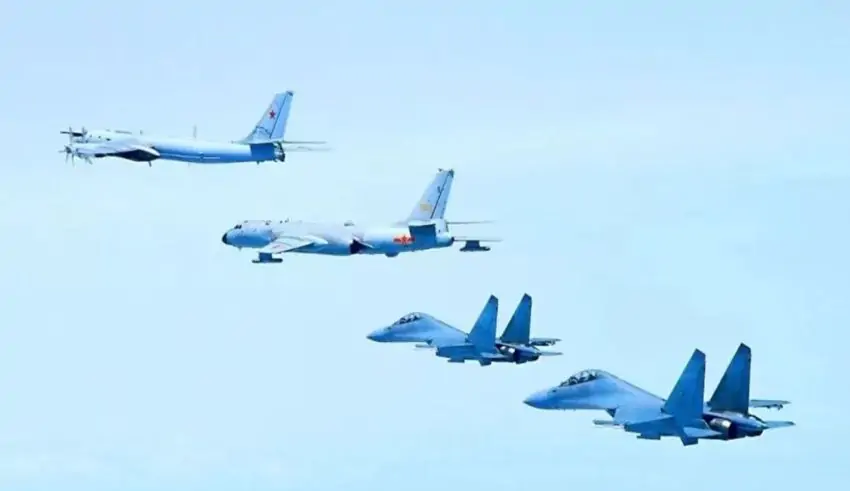

(C) The Guardian Nigeria
South Korea and Japan scrambled their fighter jets on Wednesday as six Russian and two Chinese warplanes entered their air defense zones without prior notice.
The joint patrol by China and Russia, the sixth of its kind since 2019, was seen as a show of increasingly close military ties between the two countries amid rising tensions in the region.
According to South Korea’s Joint Chiefs of Staff (JCS), the two Chinese H-6 bombers repeatedly entered and left the Korea Air Defense Identification Zone (KADIZ) off South Korea’s southern and northeast coasts starting at around 5:50 a.m. (2050 GMT Tuesday).
They reentered the zone hours later from the Sea of Japan, known in South Korea as the East Sea, together with the Russian warplanes, including TU-95 bombers and SU-35 fighter jets, and left after 18 minutes in the KADIZ, the JCS said.
“Our military dispatched air force fighter jets ahead of the Chinese and Russian aircraft’s entry of the KADIZ to implement tactical measures in preparation for a potential contingency,” the JCS said in a statement.
The planes did not violate South Korea’s airspace, it said.
Japan’s Air Self Defense Force also scrambled fighter jets after the Chinese bombers flew from the East China Sea into the Sea of Japan, where they were joined by two Russian drones, Tokyo’s defense ministry later said in a press release.
Japan’s Chief Cabinet Secretary Katsunobu Kato said that the patrol was “a serious challenge to the regional security order and a violation of international law.”
He added that Japan had lodged a protest with both China and Russia through diplomatic channels.
China and Russia have previously said that their warplanes were conducting regular joint exercises and that they did not target any specific country.
However, some analysts see the patrol as a strategic move to counter the US-led alliance system in the Indo-Pacific region, where China is locked in territorial disputes with several countries, including Japan and the Philippines.
The patrol also came amid heightened tensions on the Korean Peninsula, where North Korea has resumed its missile tests after a hiatus of more than a year.
South Korea, Japan, and the US have been trying to coordinate their policies on North Korea, but have faced challenges due to historical and diplomatic issues.
In August, the leaders of the three countries held a trilateral summit at Camp David, where they reaffirmed their commitment to peace, stability, and rules-based order in the region and expressed concern over China’s “dangerous and aggressive” behavior in the South China Sea.
As President Donald Trump declared economic independence through new tariffs he placed significant harm on developing countries in Southeast Asia…
Once again crowned the world's best entrepreneurship nation in the Global Entrepreneurship Monitor (GEM) Report, the UAE has claimed the…
At age 24 Mykhailo Polyakov from America violated regulations when he came to North Sentinel Island which authorities guard to…
The much awaited action thriller Runner is getting boosted with a stellar cast. Directed by Scott Waugh, the film has…
Emirates has launched a new product, Emirates Courier Express, which promises faster, more reliable, flexible express shipping to customers around…
Nintendo has announced the new Switch 2 to stir the gaming world with some fabulous features. This console of the…
This website uses cookies.
Read More